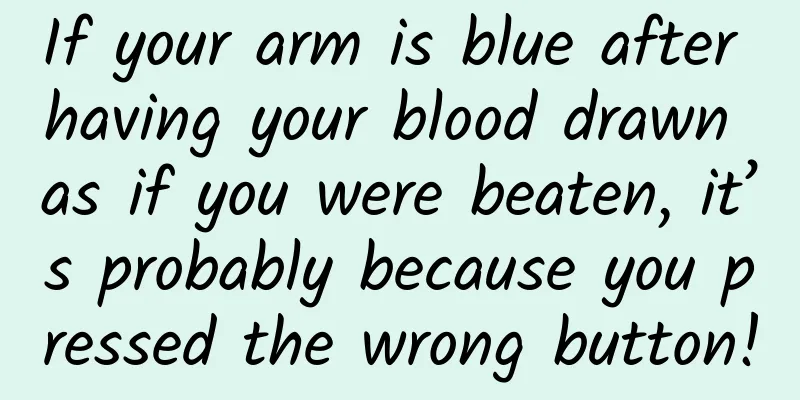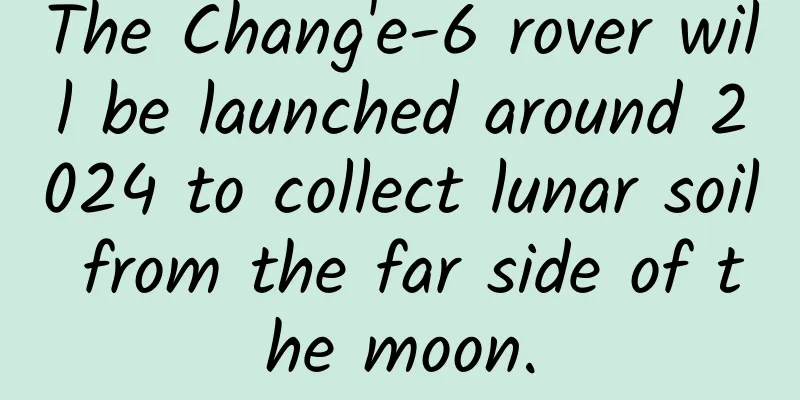If your arm is blue after having your blood drawn as if you were beaten, it’s probably because you pressed the wrong button!

|
I believe you must have had such an experience of having blood drawn - after having blood drawn, do you have bruises around the puncture site, or even swelling and pain, red and purple that won't go away for several days? Think back, right after having your blood drawn, did you press the cotton swab, bend your elbow, put on your clothes, and walk away directly, straightening your elbow from time to time while walking to see if the bleeding has stopped. If not, you clamp it again, look at it for a few rounds, and finally think that the bleeding should have stopped, and throw the cotton swab away? I believe that many people must have been "hit"! In fact, skin bruises after blood drawing are mostly caused by failure to press promptly and effectively after the needle is removed, resulting in venous bleeding into the subcutaneous tissue. To avoid bruises, good pressing techniques are as important as excellent blood collection techniques! Follow the nursing experts from Peking Union Medical College Hospital to learn some tips on correct pressing after blood drawing - Why do skin bruises occur due to improper pressure? 1. Short compression time Some people are eager to leave the blood collection area or carry a lot of personal belongings, so they often press for a few seconds after blood is drawn and stop pressing when they see no bleeding on the surface. In fact, the needle hole on the subcutaneous blood vessel is still bleeding. In order to prevent subcutaneous bleeding, you should press for at least 5 minutes, and patients with coagulation dysfunction or taking aspirin should extend the pressing time appropriately. 2. Improper compression position or too small area When drawing blood, the needle will slide for a distance after piercing the skin and then pierce the blood vessel. After removing the needle, many people will only press the skin puncture point, but ignore the main bleeding point - the puncture point of the blood vessel wall, causing the puncture point of the blood vessel to bleed in the deep tissue, causing subcutaneous congestion and skin bruises. 3. Improper pressing force If the pressure is too light, the puncture point will not be fully compressed, and the hemostasis effect cannot be achieved. If the pressure is too heavy, it will cause local capillaries to rupture and produce stasis. If too much force is applied, when the hemostatic items such as cotton swabs are removed, the instantaneous large blood flow impact may cause bleeding again. 4. Press and knead In clinic, many patients often use cotton swabs to press and rub after the needle is removed, thinking that this can relieve local pain. In fact, this is not conducive to hemostasis of the puncture point, and the blood vessels and subcutaneous capillaries after puncture are very fragile, and even slight rubbing can cause local bruises. Learn the correct pressing technique 1. The compression area should be sufficient After blood collection, the pressing area of the puncture point must be sufficient. The methods include thenar eminence pressing method, thumb grip pressing method, and three-finger pressing method. Regardless of which method is used, the key is to press a large area to ensure that the skin puncture point and the blood vessel puncture point can be pressed at the same time. 2. Press without kneading, press continuously with even and moderate force As mentioned above, gently rubbing the puncture point will not only fail to stop bleeding, but will also accelerate bleeding, which is counterproductive; pressing should be continuous and even, and the time should be at least 5 minutes. If you press for a while and then check, it will not only affect the speed of stopping bleeding, but also make bruising more likely. 3. Elbows should be straight Pressing with the elbow bent will add extra pressure and change the relative position of the skin puncture point and the puncture point on the blood vessel. The pressure point moves away from the puncture point as the skin moves, and the blood vessel puncture point fails to receive effective pressure, resulting in subcutaneous bleeding. What if bruising already occurs? 1. Apply cold compress within 24 hours If bruises have already occurred, you can use cold towels or ice packs to cool the blood vessels within 24 hours to speed up the hemostasis. Avoid lifting heavy objects on that side of the limb. 2. Hot compress after 24 hours 24 hours after the bruise appears, use a hot towel to apply heat to promote blood circulation and speed up the removal of blood stasis. You can also apply some external medicines that promote blood circulation and remove blood stasis. 3. Seek medical attention promptly Generally, a small bruise will appear around the puncture site, which will heal in three to seven days. However, if there is too much bleeding, resulting in a larger bruise or local hematoma, you should seek medical treatment promptly. Have you learned the correct pressing technique after reading this? Remember to press well next time after drawing blood. Content from: Zuo Qingna, Guo Na, and doctors at Union Medical College said About the author: Zuo Qingna Head nurse of the Department of Health Medicine, Peking Union Medical College Hospital, oncology specialist nurse of the Chinese Nursing Association, has been engaged in clinical nursing for nearly 20 years. Audit expert: Guo Na Director of Nursing Department, Peking Union Medical College Hospital, Chief Nurse, Master Supervisor. Vice Chairman of Nursing Committee, Peking Union Medical College Hospital, Vice Chairman of International Exchange Working Committee, Chinese Nursing Association, Vice Chairman and Secretary General of Nursing Committee, Chinese Hospital Association, Executive Vice Chairman of Nursing Information Committee, Chinese Medical Information Society. |
>>: The barren saline-alkali land has actually changed the "appearance" of the coastline?
Recommend
Where do aflatoxins hide?
Aflatoxin can cause liver cancer and some other c...
The guy inserted a catheter into his own heart and won a Nobel Prize!
This article was first published by Hunzhi (WeCha...
Ministry of Agriculture and Rural Affairs: 2021 National County Digital Agriculture and Rural E-commerce Development Report
The report shows that in 2020, the online retail ...
Marine Science Cartoon丨This long picture tells you how wonderful the world 8,000 meters below the sea is!
In addition to the world where humans and many ot...
The efficacy and function of Artemisia selengensis
Artemisia selengensis has rich nutritional value ...
Terrible! Improper drying of clothes may cause health problems? You must know these facts!
This article was reviewed by Li Jiangtao, Associa...
Good news from the Yangtze River "delivery room": this "mother" gave birth! The "baby" is so beautiful!
For many days in a row, a "great mother"...
[Smart Farmers] New technology helps microorganisms settle in water
China is the world's largest aquaculture coun...
What effects do aerobic and anaerobic exercise have on cardiovascular health?
Maintaining cardiovascular health One of the impo...
Effects and functions of winter mallow root
The medical value of winter mallow root is beyond...
The efficacy and function of sheep dung root
Speaking of sheep dung root, I believe many frien...
The efficacy of sand crawlers
Sandworms may be unfamiliar to many of you, but t...
Is copper coin grass poisonous?
As people in modern society pay more and more att...
Sago is not rice, it’s “coconut”!
How can we miss the icy cold desserts in the hot ...
Counting: Ancient Chinese Mathematical Wisdom on Small Sticks
The numbers that seem simple to modern people are...









